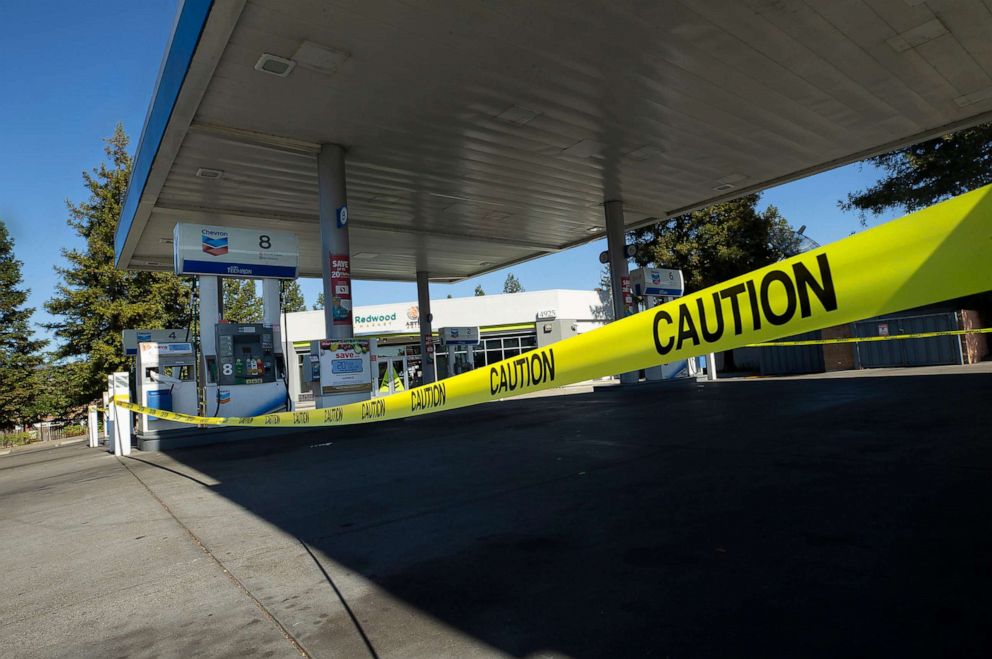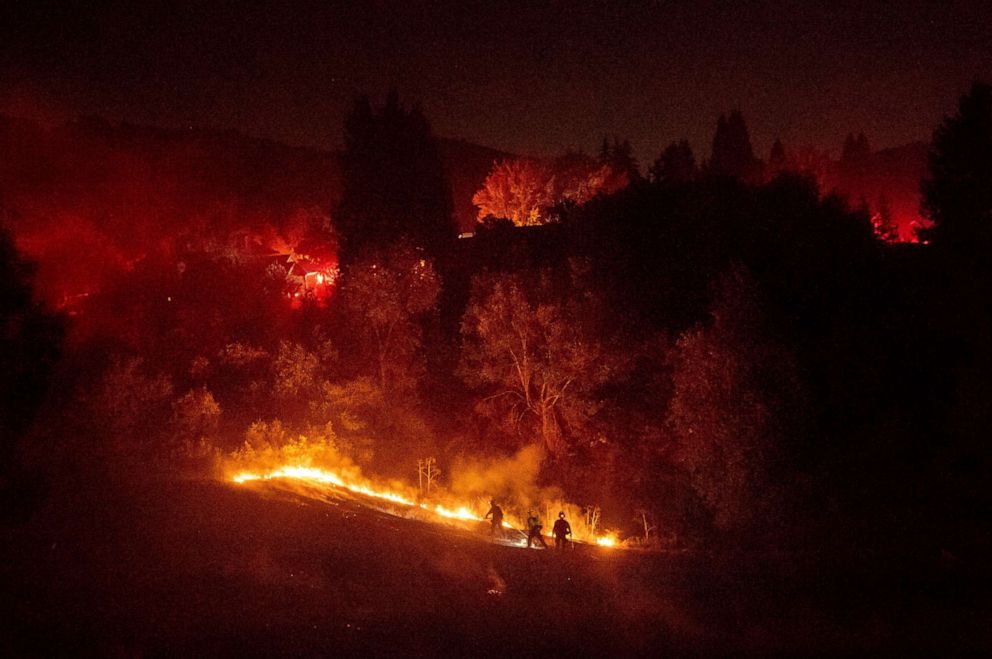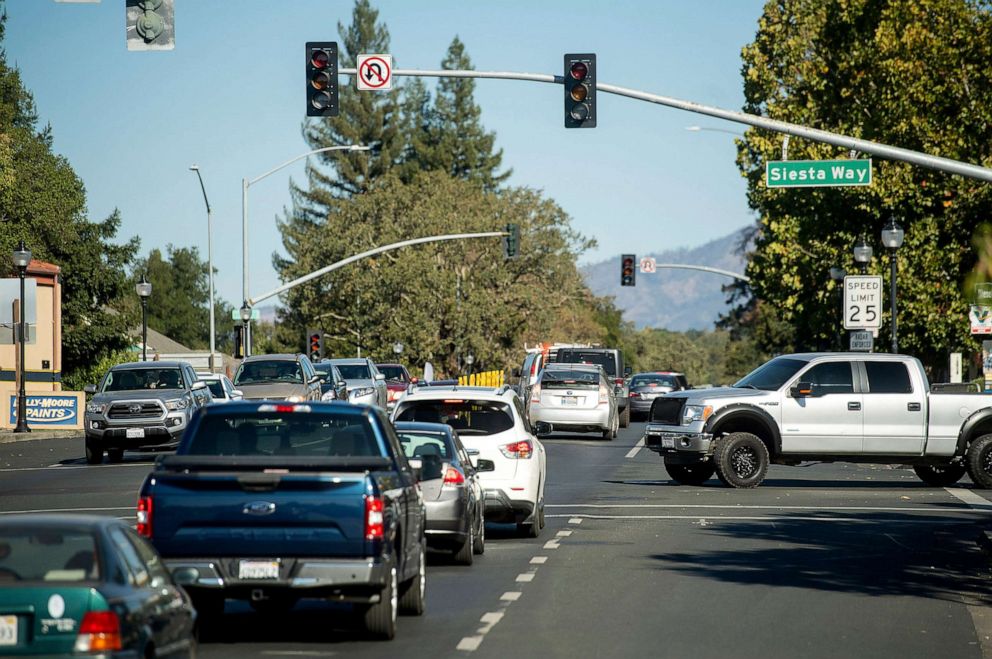How the California power outages reduce wildfire risk: What you need to know
The power was preemptively cut as high winds moved into the state.
Hundreds of thousands of Californians are left in the dark after their electricity was turned off in an effort to reduce the risk of wildfires.
Why does cutting the power help? Are there better solutions? Here's what you need to know:
Weather and power
The power was preemptively cut to a wide swath of Northern California Wednesday and Thursday as high winds, which contribute to blazes, moved into the Golden State.

A Pacific Gas and Electric meteorologist said the weather forecast this week is the strongest wind event since the Oct. 2017 North Bay fires which were caused by "electric power and distribution lines, conductors and the failure of power poles," reported San Francisco ABC station KGO.
PG&E was found responsible for dozens of wildfires, including last year's Camp Fire -- the deadliest fire in California's history. The Nov. 2018 Camp Fire in Northern California, which killed dozens, was sparked by power lines owned and operated by PG&E, Cal Fire said in May.
Overnight, wind gusts climbed to over 70 mph in parts of Northern California, and the Merill Fire broke out, forcing evacuations. And because of very dry conditions, the Briceburg fire in Mariposa County quickly doubled in size, prompting evacuations.

Southern California started to see preemptive power shutdowns Thursday as the worst of the gusty, dry winds moved into the region.
The National Oceanic and Atmospheric Administration issued a rare extreme fire danger for Los Angeles County and Ventura County for Thursday where wind gusts could reach 70 mph. Coupled with low humidity, that's a prime environment for a rapid fire spread.
PG&E said it turned off power "to protect public safety" as gusty winds and dry conditions bring "a heightened fire risk."
"Once the weather subsides and it is safe to do so, PG&E crews will begin patrolling power lines, repairing damaged equipment and restoring customers," the company said. "Outages (weather event plus restoration time) could last longer than 48 hours."
PG&E filed for bankruptcy after losing billions from the Camp Fire.
Since PG&E was determined to be the root cause, "the burden of those liability claims, coupled with the state legislature [which] determined [PG&E] could not raise rates to pay for those, they couldn't use rate payer money to pay for those fire-related claims, they would have to use shareholder money," said Catherine Wolfram, who is a professor at the University of California at Berkeley and an expert on energy policy with the campus' Energy Institute.
Without enough shareholder money to cover the cost, they had to file bankruptcy, Wolfram said.
"PG&E right now is very gun-shy of taking any risks"and doesn't "want to be liable if something goes wrong," said Stephanie Pincetl, a professor at UCLA's Institute of the Environment and Sustainability and director of the California Center for Sustainable Communities. "They're trying to manage their risk, and if I was in their shoes I would probably do the same thing, 'cause you don't know."

Problems
One problem contributing to the fire risk is houses being developed in places where they shouldn't, Pincetl said. When subdivisions are built in especially dry, windy and wooded areas of California, the homes need power, but they're at higher risk for fires, Pincetl said.
There's also the massive area to patrol.
"PG&E has a very, very, very extensive grid," Pincetl said. "So it means that you have hundreds of thousands of miles really of transmission that you need to be very vigilant about in keeping upgraded, and that includes brush clearing."
The shutdown also "shows that PG&E, the public utilities commission and regulators have not really worked to figure out strategies to mitigate the potential of wildfire driven by our electricity infrastructure," Pincetl said.

"The utilities have known for awhile now, I would say several years," Pincetl said, "that change in climate and the accumulation of brush around the pathways of the grid-lines that there is an increased chance of wildfire being caused by a spark from the grid or some other incident."
Solutions
"We probably have to stop building in places where we're putting people at risk," Pincetl said. "Whether it's a grid-caused fire, or an ignition from a car engine, or your lawnmower or something else, those are not places where people should be living and expect all the tax payers of the state to bail them out."
She also suggests gradually investigating in local sources of energy like wind, geo-thermal and solar.
Another way to stop preemptive shutoffs during high-wind events would be moving power lines underground, said Wolfram -- "but that's really, really expensive."
Another option is putting "sophisticated sensors on the lines" which can detect if a power line is falling and de-energize it before it hits the ground, said Wolfram.
"There's speculation that this [preemptive shutoff] is PG&E's way of saying, it [underground power lines] might be expensive, but the alternative is to have these shutoffs," said Wolfram.
"There are definitely ongoing negotiations and discussions about what to do given the fire risk created by electricity," Wolfram said.
ABC News' Max Golembo and Julia Jacobo contributed to this report.




